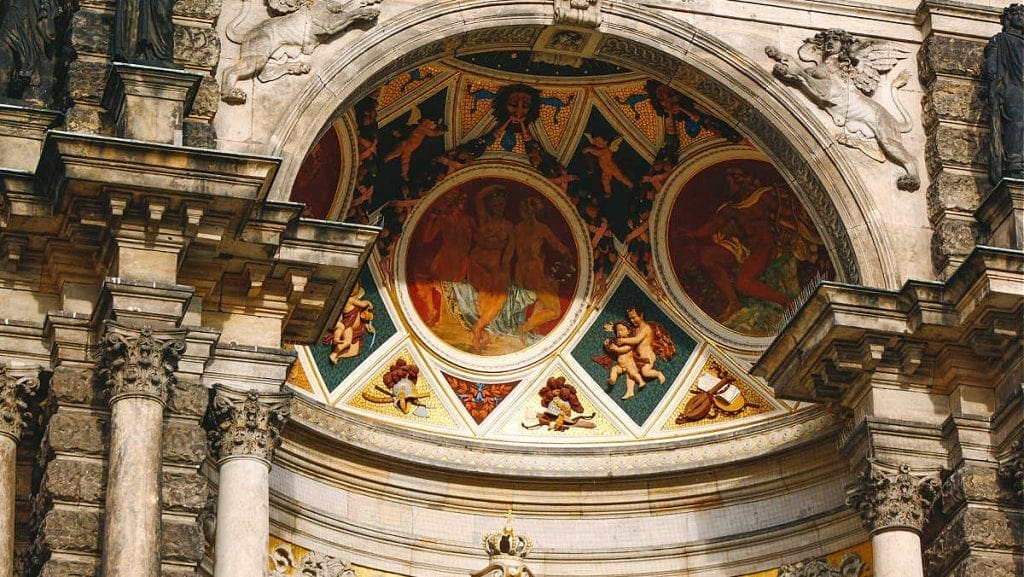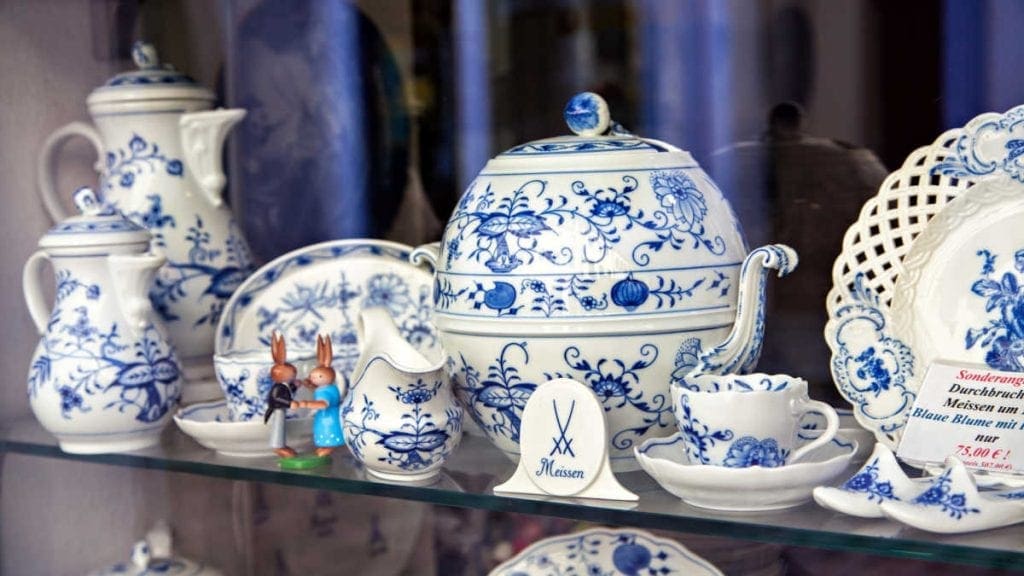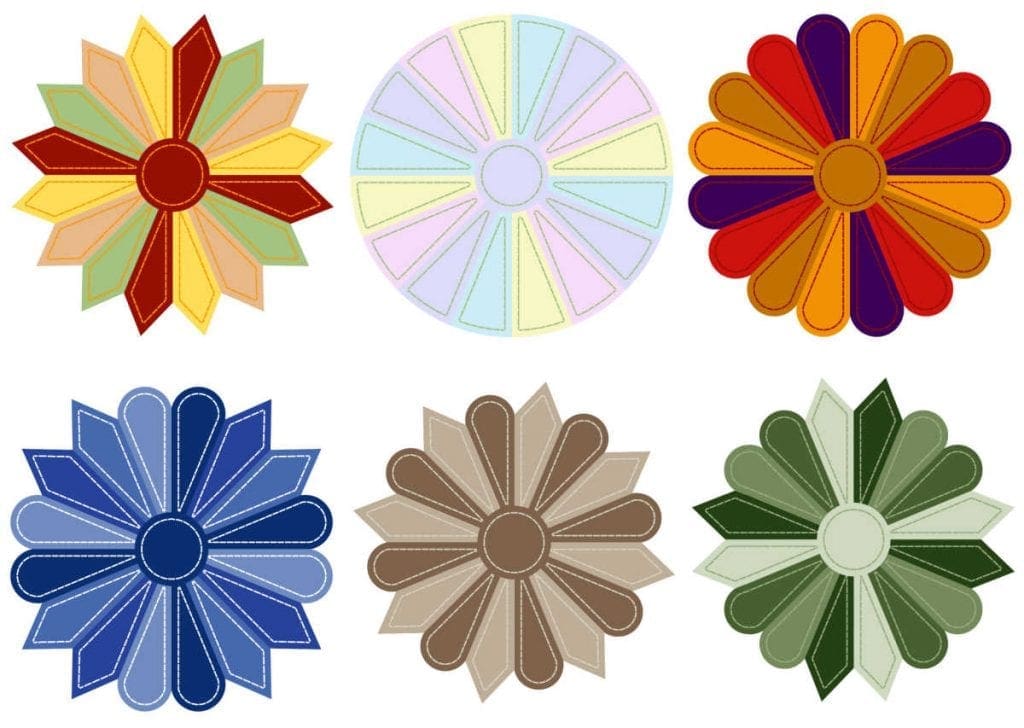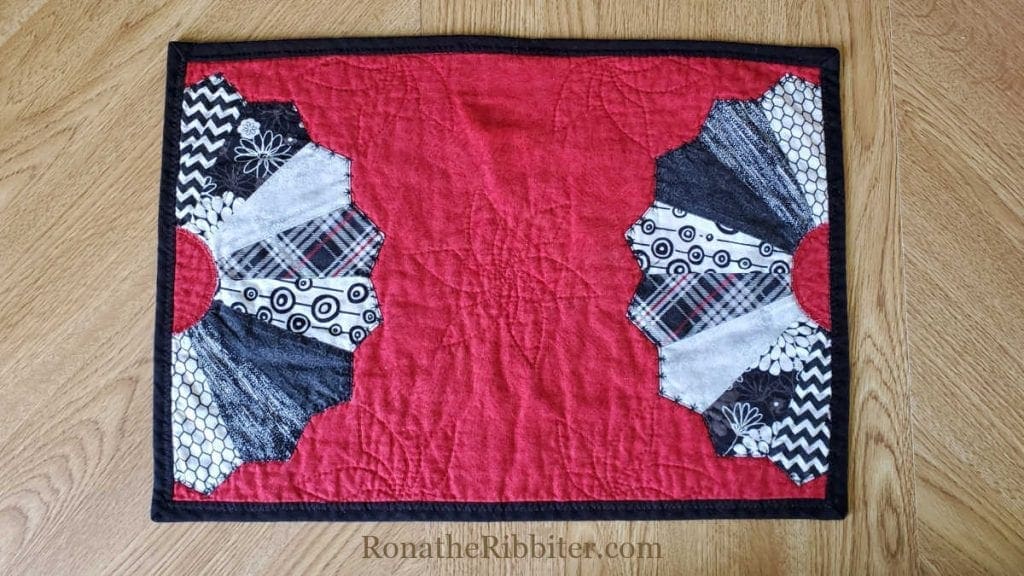How a simple creators mark became one of the world’s most popular quilt blocks
If you look at the images of Dresden porcelain plates, it might be difficult to discern right away how these incredible works of art were somehow turned into the world famous quilt blocks we know of today. This would be because the Dresden Plate quilt block has nothing to do with the delicate paintings on the top of these porcelain plates. Instead, they have everything to do with what’s painted on the bottom.

The Dresden Porcelain
Located in Northeast Germany lies the city of Dresden. If you were a painter, sculptor or artist of any kind during the Victorian era, Dresden was the place to be. It was, by many accounts, an important center of the ‘romanticism’ movement. Being the capital of Saxony and so close to the nearby city of Meissen where the porcelain was made, it gave rise to hundreds of ceramic decorating studios throughout the 19th century.

Today, many people think of the Dresden plate or the Dresden figurines as an actual person or company. The truth is, the term really defines the artistic movement as a whole. An ‘art deco’ if you will. Many of the famed Dresden porcelain pieces were created by a group of painters: Karl Richard Klemm, Donath & Co, Oswald Lorenz, and Adolf Hamman. This group did not actually make the porcelain. In truth, they purchased the pieces created in nearby Meissen then painted their artwork on top.
The “Dresden style” became so popular it was hard to tell one artist from the next. So, to set their work apart from all the other porcelain artists in town the group of men created and registered their own mark or “trademark” called the famous blue crown Dresden porcelain mark.

Under the umbrella of this mark, the four painters created an array of exquisite porcelain dinnerware and figurines. They also used the process of “porcelain lace” on many of their figures. It was one sure fire way to know if you had a true Dresden piece.
Did you know…
Porcelain Lace is the practice of dipping real lace into the porcelain then firing them.
What does this have to do with the Dresden Plate Quilt Block?
Even though the Dresden Plate quilt block pattern did not become popular until the 1920’s, it doesn’t seem the block actually began as the full circular pattern.

Going back as far as the late 1800’s, the Dresden Plate Fan was used in quilt examples. Many seeming to be made of wool, then later of cotton. They were pieced and appliqued. Eventually, four of the fans were put together to make the full Dresden Plate quilt block circle we use today.
Sadly, during the allied bombings of WWII, many of the original work and records are lost to history. However, we do know that the original blue crown mark included 2 or 3 “petals”.
-
 Traveling Quilter Books$14.95 – $39.90
Traveling Quilter Books$14.95 – $39.90 -
 Quilted Keychain Pattern (PDF)$5.00
Quilted Keychain Pattern (PDF)$5.00 -
 Quilter’s Travel Journal – Shows and Retreats$19.95
Quilter’s Travel Journal – Shows and Retreats$19.95 -
 Water Crystals Quilt Pattern$12.00
Water Crystals Quilt Pattern$12.00 -
 Winter 3-in-1 Table Quilts Pattern$12.00
Winter 3-in-1 Table Quilts Pattern$12.00
Due to so much of the history being lost during the war, there is no real way to prove the blue cross Dresden porcelain mark was the true inspiration for the Dresden Plate quilt block we know today. Or, perhaps the mark was inspired by the block. Either way, based on the timeline and popularity of the Dresden style, it stands to reason the two could very well be linked.

What are your thoughts on the origin of the Dresden Plate quilt block? Have you made a Dresden quilt? You can share in the comments, share it in our Facebook group or even send me an email. I love hearing from you!
RELATED POSTS:
- Complete lists of Quilt Shops in the US
- Complete list of Quilt Show around the World
- Planning a Shop Hop road trip? Start HERE!
- Grab my FREE Tote bag pattern!
- Join the Quilters Bucket List Challenge!
Do you know someone who would love the Dresden Plate history? Click the buttons below to share with your friends! Then be sure to join us in the Traveling Quilters group on Facebook for more travel adventures!
more on the blog
Books, Patterns, Shirts, Mugs and more!
-
 Traveling Quilter Books$14.95 – $39.90
Traveling Quilter Books$14.95 – $39.90 -
Product on sale
 Life Happens, Quilting Helps Quilting T-Shirt UnisexOriginal price was: $25.00.$15.00Current price is: $15.00.
Life Happens, Quilting Helps Quilting T-Shirt UnisexOriginal price was: $25.00.$15.00Current price is: $15.00. -
 Quilter’s Travel Journal – Shows and Retreats$19.95
Quilter’s Travel Journal – Shows and Retreats$19.95 -
 Traveling Quilter T-shirt – Unisex$20.00
Traveling Quilter T-shirt – Unisex$20.00 -
Product on sale
 Quarter Inch Club Quilting T-Shirt UnisexOriginal price was: $25.00.$15.00Current price is: $15.00.
Quarter Inch Club Quilting T-Shirt UnisexOriginal price was: $25.00.$15.00Current price is: $15.00. -
Product on sale
 Traveling Quilter 18 oz. Travel MugOriginal price was: $25.00.$15.00Current price is: $15.00.
Traveling Quilter 18 oz. Travel MugOriginal price was: $25.00.$15.00Current price is: $15.00. -
Product on sale
 Jelly Rolls Quilting T-Shirt UnisexOriginal price was: $25.00.$15.00Current price is: $15.00.
Jelly Rolls Quilting T-Shirt UnisexOriginal price was: $25.00.$15.00Current price is: $15.00. -
Product on sale
 Kiss My Stash Quilting T-Shirt – UnisexOriginal price was: $25.00.$15.00Current price is: $15.00.
Kiss My Stash Quilting T-Shirt – UnisexOriginal price was: $25.00.$15.00Current price is: $15.00.



















My aunt and grandmother had pieced a Dresden plate quilt top stitched by hand. I assume it was for my aunt’s trousseau. After my aunt passed, my dad was at her house as the children were clearing out the house. He spotted the quilt top on a pile that was destined for the landfill. They let him rescue it and then gave it to me. I’ve started hand quilting the top and hope to finish it for my niece. It is huge (I’ve never really measured it) and it has an ice cream cone border. I think about what my grandmother and her daughter might have talked about in the 1930s while piecing the quilt. Maybe they talked about Dresden.
What an amazing memory Gregory. Not to mention a fantastic heirloom. Thank goodness it was saved from the landfill. I know you’re putting all your love into finishing such a treasure!